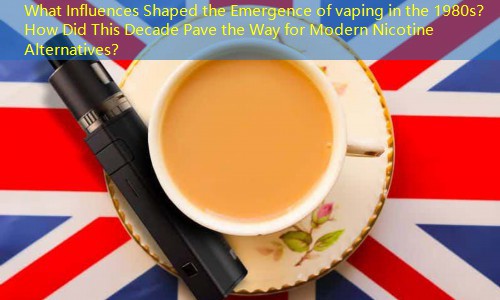Introduction to Vaping Trends of the 1980s
The 1980s marked a revolutionary era in cultural and technological advancements, and while vaping products as we know them today were not yet on the market, their genesis can be traced back to this influential decade. The years from 1980 to 1989 laid the groundwork for the transformation of smoking into a more health-conscious alternative, leading to a surge in the popularity of electronic cigarettes in subsequent decades. Several significant milestones emerged during this period, shaping both the smoking habits and the public’s perception of nicotine consumption, which ultimately led to the electronic alternatives we see today.
Five Notable Milestones of the 1980s
1. Introduction of Low-Tar and Low-Nicotine Cigarettes
The early 1980s witnessed the introduction of low-tar and low-nicotine cigarettes, marking an attempt by tobacco companies to reduce the harmful effects associated with traditional smoking. This transition aimed to attract health-conscious consumers and was a precursor to the search for alternatives to combustible tobacco products. Although these cigarettes were marketed as healthier options, they still contained harmful substances, which would later drive the demand for innovative nicotine delivery systems.
2. The Rise of Anti-Smoking Movements
The 1980s also saw the rise of powerful anti-smoking movements, which gained momentum as awareness of the health risks associated with tobacco smoking grew. The American Cancer Society and other organizations launched campaigns to educate the public about smoking’s dangers, leading to increased social stigma surrounding smoking. This shift in public perception set the stage for the development of vapor-based products, as many smokers sought to reduce or eliminate their tobacco consumption.
3. The Launch of the First Electronic Cigarette Concept
In 1985, a significant advancement in nicotine delivery occurred with the patenting of the first electronic cigarette concept by a Chinese pharmacist. Although the product did not enter the market until later, this initial invention highlighted the potential for a smoke-free alternative, hinting at the future direction of vaping technology. This early conceptualization laid the foundation for the eventual development of devices designed to vaporize liquid nicotine, leading to the rise of e-cigarettes in the 2000s.
4. Flavor Innovation in Nicotine Products
During this decade, the tobacco industry began experimenting with flavor innovations in various tobacco products. Menthol, fruit, and even candy flavors started to emerge, targeting younger consumers and making smoking more appealing. Although this marketing strategy was primarily aimed at conventional cigarettes, it set a precedent for the flavors that would later dominate the e-liquid market in the vaping industry, making the idea of flavored nicotine consumption more mainstream.
5. Increasing Regulations and Public Smoking Bans
With the rise of anti-smoking sentiment came increased regulations and public smoking bans in many countries throughout the 1980s. Legislative measures aimed at curbing smoking in public places made traditional smoking less socially acceptable, prompting consumers to look for alternatives. This environment of regulation fostered an urge for innovations that would lead to the creation of vaping products that could be used discreetly and in locations where smoking was prohibited.
Conclusion: Foundations of Modern Vaping Influences
The advancements made during the 1980s played a pivotal role in shaping the future of nicotine consumption, setting the stage for the emergence of vaping as a prominent alternative to traditional smoking. From the introduction of low-tar cigarette options to the inception of electronic cigarette concepts, each milestone contributed to a broader understanding of nicotine delivery mechanisms. With the increasing awareness of health risks and the emergence of anti-smoking campaigns, it became evident that consumers would seek alternatives that aligned with their health-conscious choices. The decade was critical, as it laid the groundwork for the vaping revolution that would follow, leading to the evolution of consumer preferences and behaviors surrounding nicotine consumption in the 21st century.









